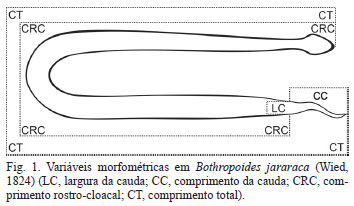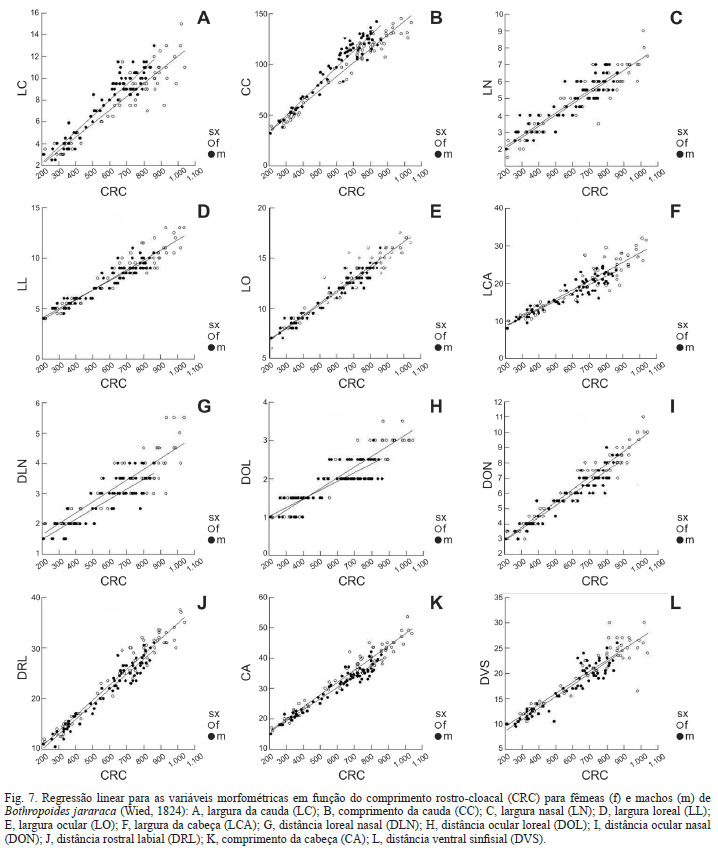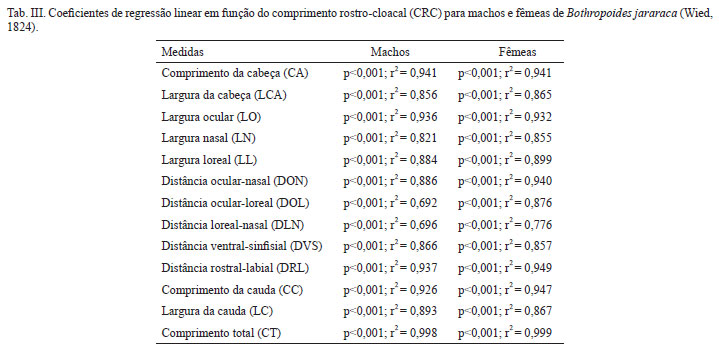Although male and female snakes are born with the same size, growth rates and age of sexual maturation may be different, thus determining sexual dimorphism in the later stages of life. We evaluated the incidence of sexual and ontogenetic morphometric variation in Bothropoides jararaca (Wied, 1824), exploring relationships involving body size and sexual maturity through 14 morphometric variables. We analyzed 142 specimens from the state of Rio Grande do Sul, southern Brazil. Morphometric data - head length, snout-vent length, tail length, total length; head width, ocular width, nasal-loreal width, tail width; nasal-ocular distance, ocular-loreal distance, loreal-nasal distance, ventral-sinfisal distance and rostral-labial distance - and length/diameter of ovarian follicles, were taken in millimeters by simple rule and analogical caliper, precision 0.05 mm. Sex determination was performed by inspection of the gonads. Age was associated to sexual maturity. For the statistical analysis the analysis of variance (ANOVA) with Tukey's post hoc test was used with, linear regression and canonical discriminant analysis (CDA). Most measures indicated sexual dimorphism (ANOVA, P<0.05) only in adults (Tukey, P<0.05). Regression analysis showed that snout-vent length explains the behavior of other variables (P< 0.001) and in all measures, females grow more than males. The ADC has been successful in separating the genders and age groups, with biological meaning, whereas 79.2% of cases were correctly classified.
Ontogeny; morphology; dimorphism









